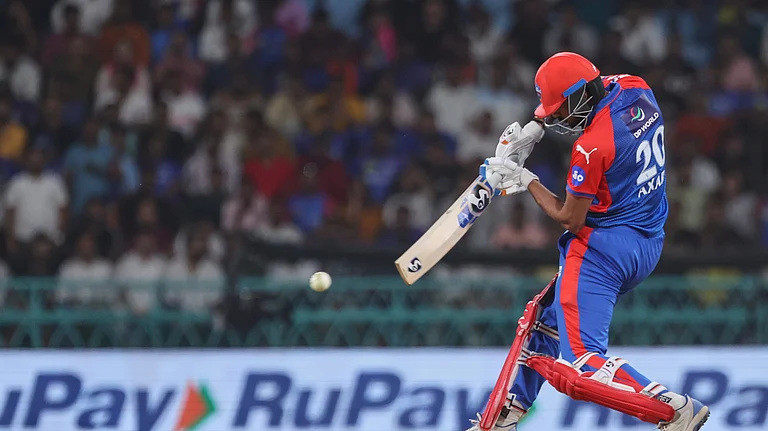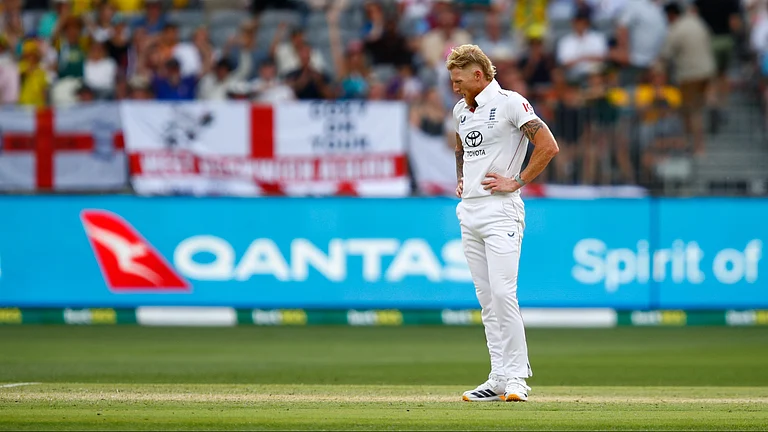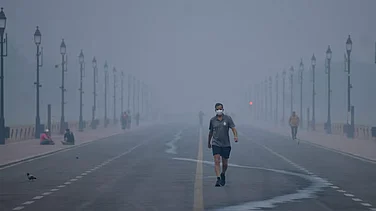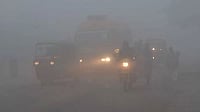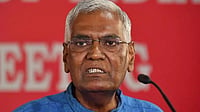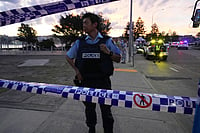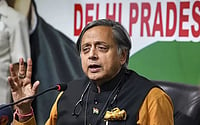Still Ahead of the Others
IN Uttar Pradesh, the BJP faces an electoral scenario vastly different fromthe frenzied one of 1991. The party no longer has a powerful emotional planklike Ram Janambhoomi, what with the Vishwa Hindu Parishad having failed to whipup similar passions over the Kashi-Mathura issue.
The party has also been forced to sidestep delicately the issue of corruptionfollowing the chargesheet against Advani and other BJP leaders. While its pollstrategy now comprises raising broader issues like the Kashmir problem,infiltration from Bangladesh and the activities of the Pakistani ISI, the partyis clearly once again falling back on a thinly disguised Hindutva plank.
"In every house there is an ISI agent," says Professor Shyam NandanMishra, member secretary of the BJP's election management committee. But withthe arrest of its MP from Gonda, Brij Bhushan Sharan, under TADA, it will bedifficult for the BJP to tout even national security or criminalisation ofpolitics as a poll plank with a plain face.
Even though the BJP dismisses the Samajwadi Party (SP) and the BSP as 'regionalparties', SP supremo Mulayam Singh Yadav still remains the main target of theBJP's campaign as the Congress is in complete disarray after N.D. Tiwari quitthe party to head the rebel faction. The alleged increase in ISI activitiesduring Mulayam's tenure as chief minister will form the focus of the BJP'soffensive against the SP, say party leaders. In a bid to gain the backward vote,Kalyan Singh has been projected as the BJP's answer to Mulayam. Says ShyamNandan Singh: "When it is a question of forming a government at the Centre,the people will choose between the Congress and the BJP. All regional partieswill be pushed to the background."
The BJP's prospects could be influenced by the timing of the polls. Itstands to benefit if the Lok Sabha and the state assembly elections are heldsimultaneously, as it would get considerable mileage out of local issues in theLok Sabha seats as well. Organisationally, it is well prepared for the electionsand plans to have "20 youth at every (polling) booth".
In 1991, the BJP rode to success in Uttar Pradesh on theRam Janambhoomiissue, getting 51 out of 85 Lok Sabha seats, with 32.8 per cent of the totalvotes. But after the demolition of the Babri Masjid on December 6, 1992, the BJPlost ground, as was evident during the state assembly elections in 1993. From214 seats in 1991, it was reduced to 177.
That the SP and the BSP are no longer allies is to the BJP'sadvantage. But Yadav's hands could be strengthened by an alliance with theJanata Dal. Explaining his interest in a tie-up with the JD, Yadav said:"In the '93 assembly election, the JD secured13 per cent of the overallvote, whereas the BSP got only 9.8 per cent. The SP got 20.2 per cent of thevote." Thus, if the SP and JD were to get together, they would prove evenmore powerful than the SP-BSP combine.
While Yadav says the alliance with the JD is more or lessfinal, state Dal president Ram Asre Verma feels it is too early to be sure. Hewants to draw the BSP into the alliance and says: "Together, the threeparties are an unbeatable combination."
BIHAR
Laloo Remains the Obstacle
IF Bihar Chief Minister Laloo Yadav's appointment aspresident of the Janata Dal has annoyed any party, it is the BJP. For theappointment has reinforced Laloo's already strong position in the state. InOctober 1990, the JD leader, not content with arresting Advani, thereby forcinghim to abandon the Rathyatra, had also in the months that followed engineered adefection in the 39-member BJP legislature party, with 11 members crossing overto the JD. This was when the fledgling Laloo government was in a minority.
Last year, the assembly election saw Laloo securing absolutemajority, while the BJP emerged as the main Opposition party, winning 41 seatsin the 324-member legislative assembly, and the Congress was relegated to thirdposition—down from 72 to 27 seats—with continuing factional fighting.
The BJP calculates that it needs to more than double its present strength offive Lok Sabha seats out of the 54 seats from the state for a serious bid atforming the government at the Centre. In 1991, the Congress had won just oneseat while Laloo's JD cornered 33 seats. The BJP had won five, JMM six and CPIand CPI(M) seven as elections were countermanded in two constituencies. In thefirst split that the JD suffered, Ram Lakhan Singh Yadav along with some otherMPs who had won under Laloo's leadership crossed over to defend the NarasimhaRao Government in July 1993. Later, George Fernandes and Nitish Kumar formed theSamata Party which has now decided to align with the BJP in the coming election.And this is what has raised the hopes of the saffron brigade.
"A section of the non-Yadav backward castes will certainly vote for thealliance," says Saryu Roy, the Samata Party's state unit general secretary and spokesman. In fact, there is a possibilityof the BJP sparing 14 seats for the Samata Party in order to defeat the JanataDal. "The fodder scandal has come in handy," says Roy. The chiefminister has ordered a judicial probe but there is a possibility that thescandal would affect—apart from the JD—the Congress as well as closerelatives of two Union ministers, Ram Lakhan Singh Yadav and Jagannath Mishra,who have been arrested following their alleged involvement.
While the Congress decline has been visible, the BJP has moreor less remained steady in the state. It secured 13.5 per cent votes in lastyear's assembly election against 17 per cent in the 1991 Lok Sabha election.But the BJP's hopes this time lie in its reckoning that the backward Kurmisand Koeris, who had voted for the JD in the last Lok Sabha election, and theBrahmins, who voted for the Congress, will now switch sides in favour of the BJP—theBrahmins mainly due to the demolition at Ayodhya.
However, Laloo's poll management has so far surpassed suchcalculations. Even his rivals accept that he has solid support from the Muslimsand the Yadavas who together constitute over 25 per cent of the state'spopulation—and this forms the chief minister's strong support base.
MAHARASHTRA
One Up on Rivals
IN Maharashtra, the real electoral advantage for the Sena-BJP alliance liesin the Congress inability to get its act together. This has fuelled the combine'shopes of catapulting from nine seats in the 1991 Lok Sabha poll to 30 in the1996 general election. "The confrontations continue. Day by day, SharadPawar is becoming friendless in his own party," says BJP General SecretaryPramod Mahajan.
A potential advantage for the BJP is the shaping up of a credible third forcethreatening to wean Dalit and minority votes away from the Congress. "Inthe last election, about 42 per cent votes got scattered because of a dividedthird force. This time it won't split," says Marzban Patrawala, who quitthe Congress for the Samajwadi Party, which enjoys the support of the Janata Dal,the Peasants' & Workers' Party, the Left Front and the Republican Partyof India.
In contrast to the Congress disunity, the BJP and Sena havestayed united despite differences. Deputy Chief Minister Gopinath Munde says seatadjustments will be sorted out, but the potential flashpoint remains: the Senahas asked for 25 seats despite the understanding that it would play a lesserrole in the Lok Sabha polls.
Munde cites improved law and order, rural electrification andfree education till Class X as his government's achievements. Its more dubious'achievements', however, include renaming Bombay, scrapping the SrikrishnaCommission probing the '93 riots, scrapping the Minorities Commission andbringing back Enron. The Congress will focus on these issues. It also hopes towin back the sugar belt. But the continued alienation of the Muslims is bad newsfor the party as Maulana Kashmiri of the Ulema Council says the community willshun Congress and the saffron front alike. All in all, the BJP has reason to beconfident—provided its allies behave.
IN a state where S.K. Jain distributed his largesse most generously amongpolitical parties, it is the BJP which seems to be feeling the heat more thanthe Congress. Why? "Because while the Congress stopped making corruption anissue long ago, the BJP was banking heavily on it," says former Congress MPGhufran-e-Azam.
Party perceptions apart, the BJP's advantage in Madhya Pradesh remains.With Congress leaders V.C. Shukla and Madhav Rao Scindia chargesheeted in thehawala case and the breakaway Arjun Singh faction having a significant hold overa large chunk of Congress voters, state leaders say that the BJP is bound toimprove on its 1991 performance of bagging 12 of the 40 parliamentary seats.
All this should have made former chief minister Sunderlal Patwa's positionstronger, what with the benefit of the anti-establishment vote and his mainrivals within the party, Kailash Joshi and Virendra Kumar Saklecha, neutralised.But his position remains far from happy. The divisions in the state BJP areclear, the most recent example being Uma Bharati's 'sangharsh' yatra inFebruary where the state leadership was put under a microscope.
To iron out differences, the leadership has replaced Kushabhai Thakare withSunder Singh Bhandari as the central observer. In February, as part of the newstrategy, Patwa, along with ace rival Kailash Joshi and Lakhiram Agrawal,launched a statewide electoral offensive. They held moderately successfulprogrammes in eight state commissionaries. Also, the state's electionmanagement committee will hold a meeting on March 15. Efforts are on to removethe tag of a pro-trader, pro-upper caste party and field tribals and OBCs ascandidates, particularly from the Chhattisgarh belt.
Patwa himself remains calm in the face of all odds. "Allthis talk of rifts within the party is hype. There may be differences ofopinion, but once a decision is taken, we all abide by it. The local partystructure has to be made stronger. Leaders from Delhi and Bhopal are not enoughto win the elections," he points out.
Party calculations also bank heavily on the law of averages.Their reckoning: both the Congress and the BJP have roughly 35 to 36 per cent ofthe voters on their side. "It is actually the 4 or 5 per cent floatingvoters who elect a government," analyses Prabhat Jha, a BJP office-bearer,adding that this floating population went the Congress way in both '91 and '93."Now it is our turn," he says.
GUJARAT
The Enemy Within
BATTERED by dissidence since it came to power a year ago, the BJP's momentof reckoning has arrived. The advantage of 20 seats in the '91 Lok Sabha and121 seats in the assembly poll has been squandered through infighting betweenBJP state leaders Keshubhai Patel and Shankarsinh Vaghela. The question now iswhether oneupmanship will dig the BJP's electoral grave.
State BJP chief Kashiram Rana predicts a gain of three to four seats over1991, but not many outside the party share his confidence. Observers say thatwhile the recent incidents will not wipe the BJP out, the Congress may well gainsome seats.
Vaghela and Patel declared an armed truce before last month's Rajya Sabhaelections and rumours that the patch-up may entail the ouster of Chief MinisterSuresh Mehta are rife. "There is a possibility of a major development inthe next 10 to 15 days," says Deputy Forest Minister Vipul Chaudhry.Speculation is that Patel may return as chief minister with Vaghela as hisdeputy.
Even if the compromise works, the BJP will be hard put to retain itsposition. Advani, at the centrestage of the hawala crisis, may not contest fromGandhinagar. Vaghela, too, is not inclined to stand from Godhra again. The BJP's'star' candidates—Deepika Chikhalia, Arvind Trivedi and Mahesh Kanoria—willfind the going tough. Following Kapadvanj MP Gabhaji Thakore's suspension, theBJP is looking to put up new faces.
The BJP rode to power on a rainbow coalition of Brahmins,Patidars and Kshatriyas. While it commands fewer votes among the Dalits andtribals, it still managed to win the lion's share of reserved seats in theassembly poll. It has also been attempting to expand its support base among theOBCs.
Despite the BJP's troubles, it is better prepared forelections than the Congress. As an observer put it: "With enemies like theCongress, the BJP does not need friends." But it needs to keep its house inorder as further bloodletting will benefit the Congress. "The longer thisdrama goes on, the easier it will be to prove the BJP can't digestpower," observes state Congress chief Amarsinh Chaudhry.
KARNATAKA
A Downward Slide
NOTHING seems to be working in the BJP's favour in Karnataka. Its leadershiphas been accused of playing petty and partisan politics. Its vote share hasdeclined in every election since 1991. Many of its star vote-catchers havedeserted the party. There is disillusionment in the ranks and senior leadershave little cause for cheer in the forthcoming general elections.
Points out five-time MLA Dr Jeevaraj Alva: "Short of cheating I saweverything—deception, betrayal, petty mindedness, oneupmanship. Even if youjoin the Naxalites, you can blossom into a politician. Not in the BJP."Alva was considered a prize catch by the BJP but he is on his way out. So isNanje Gowda, another MLA who had jumped on to the BJP bandwagon on the eve ofthe last assembly elections. While the state BJP president, B.S. Yediyurappa,claims his party will triple its 1991 tally of four seats, not many share hisoptimism. For one, the BJP has not been able to rope in new members and evenveteran politicians, who were wooed to the fold, have been marginalised.
Theerosion of the BJP vote bank is largely due to the fact that the party is stillperceived as a north Indian upper-caste Hindu party. Local leaders who have quitare seen as victims of a party which has failed to understand the South. Pointsout Srikantadatta Wodeyar: "It's very difficult to sell the BJP to theKarnataka voter. Its Hindu-Hindi-Hindustani image imposed severe restrictions when we went outto canvass for votes."
The BJP's support base is the upper classes incities like Bangalore. It is trying to broad base its appeal and project itselfas a friend of the farmer, but has failed to make any significant inroads.
RAJASTHAN
In Fighting Form
ALTHOUGH its topmost leader has been charge-sheeted in the hawala scam, theBJP in Rajasthan sees corruption as a solid electoral plank, as four of thestate's most high-profile Congress leaders—Rajesh Pilot, Balram Jakhar,Natwar Singh and Buta Singh—are caught in the hawala net. "Narasimha Raohas sacrificed too many pawns to kill one wazir (Advani)," is the popularperception.
Overall, the BJP appears better prepared. Says Chief Minister Bhairon SinghShekhawat who cuts the tallest figure on the political landscape: "We areon the offensive on the issue of corruption." But despite not having aleader to match Shekhawat's stature, the Congress can still give the BJP atough fight.
Since 1991, when it contested all 25 Lok Sabha seats for the first time, theBJP has expanded its organisational base at the grassroot level. The recentlocal bodies election, in which the BJP won most of the reserved seats,indicates that it has made gains among the SCs and STs. Shekhawat maintains theparty has made inroads into the pro-Congress Jat community as well. In starkcontrast to the Congress, Shekhawat has managed to keep dissidence undercontrol. Troublesome party seniors like Deputy Chief Minister Hari ShankarBhabra, state campaign committee chief Ghanshyam Tewari and PWD Minister LalitKishore Chaturvedi are reconciled.
The biggest chink in the BJP's armour is still the Jat-dominated westernRajasthan. While the Congress has a profusion of Jat leaders, the BJP does nothave any. While Tewari insists his party will field Jat candidates of its own,he admits that it might anger the BJP-aligned Rajputs. Jat leader Sahib SinghVerma's appointment as Delhi chief minister is expected to garner some supportfor the BJP.
Since both Pilot and Jakhar are well-placed in their respectiveconstituencies, the BJP stands to benefit if the hawala-tainted Congress MPs arenot given tickets and contest the elections as Independents. Says Tewari:"The Congress does not have any strong alternatives." But RajasthanPCC chief Ashok Gehlot feels it would be better if the party picked candidateswith a clean image.







